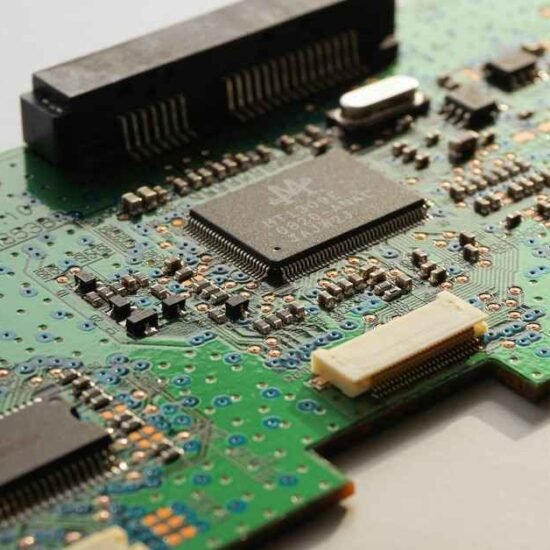Introduction
As the world technological ecosystem advances towards smooth automation, edge computing, and adaptive internet architecture, various technologies that are oriented towards decentralization, such as peer-to-peer, have already started to gain interest among engineers, developers and digital architects. Pertadad is relatively new, but it is proving to be an extremely promising technology in the adaptive protocol design space.
In early whitepapers, It is described as an adaptive-transmission digital framework, a flexible self-regulating layer that will maximize protocols responsiveness to high-load applications, variability of data, localization and changing device capabilities.
Pertadad technology is the answer to one central question: How can systems constantly self-evolve and not be updated or redesigned manually? This article explores this very thing and provides answers to the following questions.
What is pertadad, how it functions, the importance of it, and how it compares to the current systems. You can be a systems engineer, API developer, or run a data-centric enterprise, but you are about to understand why petadad may be the next decade of distributed technology.
What Is Pertadad?
It is a newly proposed adaptive digital protocol framework designed to self-adjust to system loads, latency and user environment in real-time. It serves as a middleware model that integrates with distributed applications to dynamically refine performance without manual API tuning or back-end updates.
Core Definition:
It is a self-modulating protocol architecture that learns from system input/output and optimizes communication behaviors across heterogeneous environments.
Key applications include:
- Adaptive streaming across 5G/6G networks
- Dynamic protocol selection for IoT devices
- Self-optimizing data routes for real-time analytics
With AI-layer logic built into message routing, it differs from fixed protocol stacks by being context-aware.
The Technology Behind Pertadad
At its core, It is designed using a combination of edge-adaptive encoding, machine learning (for throughput prediction), and multi-route failover logic.
Architecture Overview
| Layer | Function |
| Interpretation Engine | Decodes network demand and latency thresholds |
| Adaptive Layer | Modulates method via ML+ heuristics |
| Protocol Shims | Bridges mainstream protocols (e.g. TCP/IP, MQTT) |
| Reporting/Logging | Centralized insights dashboard |
It supports parallel stack interoperability, meaning developers can retain their legacy protocol architectures while adding Pertadad for real-time optimization on top.
Pertadad vs Traditional Protocols
Traditional networking protocols like TCP, HTTP/2, and QUIC offer stability, but they rely on predefined update structures and manual tuning based on anticipated system loads.
In contrast, pertadad responds automatically to:
- Device speed
- Endpoint stress
- Latency events
- Bandwidth fluctuations
- Data priority classification
Comparison Table
| Feature | Traditional Protocols | Pertadad |
| Static protocol structure | Yes | No |
| Real-time environment adjustment | No | Yes |
| ML-enhanced decision-making | No | Yes |
| Cross-protocol compatibility | Moderate | High |
| Fault tolerance flexibility | Low | High |
It essentially brings software-defined networking (SDN) principles into the application layer.
Use Cases: Where Pertadad Excels
It is ideal for environments that demand intelligent responsiveness and multi-device sync.
Industry Applications
- Telemedicine: Live diagnostics synced across embedded devices in low-bandwidth zones.
- Cloud gaming: Auto-latency correction and adaptive packet shrinkage.
- AV fleets (Autonomous Vehicles): Vehicle-to-vehicle (V2V) message failover redundancy.
- Smart logistics: Instant scan-and-route optimization in warehousing.
Case Study:
A 2025 pilot by a European IoT manufacturer showed a 43% latency drop and a 31% packet loss reduction after adding per-thread layer support to their existing UDP-based firmware.
Key Features and System Layers
Top 5 Features:
- Self-Learning Algorithms – Understands load history and trends.
- Protocol Refinement Engine – Modulates packet handling.
- Zero-Downtime Tuning – Adjusts in-production applications on the fly.
- Interchangeable Interfaces – API-level access for developers.
- Vendor-Neutral Design – Supported on AWS, Azure, and GCP environments.
Layered Visual Representation
| Layer | Type | Functionality |
| App Logic | Dynamic | Sends adaptive protocol commands |
| Network OS | Hybrid | Translates into meta-routes and patterns |
| Hardware API | Static ↔ Flexible | Real-time capability check + load feedback |
Pertadad and Edge Intelligence
With growing reliance on edge computing, it reinforces nodes with localized decision-making.
Key Edge Benefits:
- Reduces round-trip delays
- Compresses endpoint adaptation loads
- Edge inference support: lightweight AI accelerators
Side-by-Side: Cloud vs. Edge Pertadad Routing
| Operation | Cloud Handling | Pertadad Edge |
| Adaptive Updates | Delayed | Instant |
| Load Awareness | Weekly charts | Real-time ML |
| Failover Replay | Manual | Auto-retry |
In edge-to-cloud bridging scenarios, it shines by balancing load intelligently between central and distributed systems.
Security & Privacy Benefits
Protocol adaptability doesn’t mean risk pertadad includes security by design.
Built-In Security Modules:
- MetaHash Routing: Prevents DDoS by message fingerprint.
- Encrypted Machine Signatures: Auth-verified checkpoints on each hop.
- AI-Driven Anomaly Response: Suspends compromised nodes automatically.
Unlike rigid stacks that over-trust the configuration, it analyzes communication flow in real time to detect suspicious patterns dynamically.
Developer Tools and Integration Standards
It offers open-source SDKs (in Go, Rust, and Python) and pre-configured module stacks for platforms like
- Node.js microservices
- Dockerized environments
- Kubernetes API sidecars
- Baremetal IoT gateways (ARM v8+)
Developer Tools Snapshot
| Tool Name | Use Case | License |
| PRTD-SDK-Go | Low-latency services | MIT |
| Pertadad-Cli | CLI routing diagnostics | Apache 2.0 |
| PRT-ForwardAgent | Intelligent gateway tunneling | Proprietary |
Challenges and Limitations
Despite its strengths, Pertadad is still in early adoption stages.
Challenges:
- Requires high baseline compute availability, especially for ML inferences
- Learning curve for DevOps and NetOps professionals
- Ongoing RFC & standardization delays widespread adoption
Developer Feedback (Survey Data, Q1 2025)
| Obstacle | % Citing Issue |
| Documentation Gaps | 62% |
| Integration Confusion | 44% |
| Toolchain maturity | 33% |
The Future of Pertadad
With increasing industry support and widespread 5G/6G, edge AI and ML-based protocols, pertadad is likely to power hyperconnected autonomous environments.
Forecast by 2026:
- ISO/IEEE working groups may formalize pertadad structures.
- Dominant AI-infrastructure vendors to support it natively
- Educational bootcamps to offer dedicated certifications
As tech matures, developers can expect PERT file integration tools, advanced AI ops dashboards, and smart contract bridges for decentralized use.
FAQ
What is pertadad used for?
It is employed to streamline the discussion of devices and applications with an adaptive, AI-informed protocol layer.
Is pertadad a protocol or a structure?
It is a protocol architecture which encapsulates old-fashioned protocols by dynamically self-learning improvement layers.
Does Pertadad have collaboration with IoT devices?
Yes. It enhances performance and resiliency of IoT devices that are based on edges and use low power.
Is Pertadad open source?
Majority of the core SDKs are open-source and some tools can be licensed.
What is the difference between Pertadad, TCP, or HTTP?
It can dynamically adjust transmission logic in real-time with internal machine learning unlike static protocols.
Conclusion
In 2025, technology will require not only speed but also intelligence, security and flexibility. As a forward-thinking philosophy for digital communication across AI environments, smart devices and quickly changing infrastructures, It stands out as more than just a protocol.
As a fundamental component of future-proof system architecture, Pertadad demonstrates its ability to learn dynamically, protect proactively and integrate smoothly with your stack. It is imperative that you investigate Pertadad if you are currently developing, expanding or safeguarding software ecosystems.
Visit the rest of the site for more interesting and useful articles.




